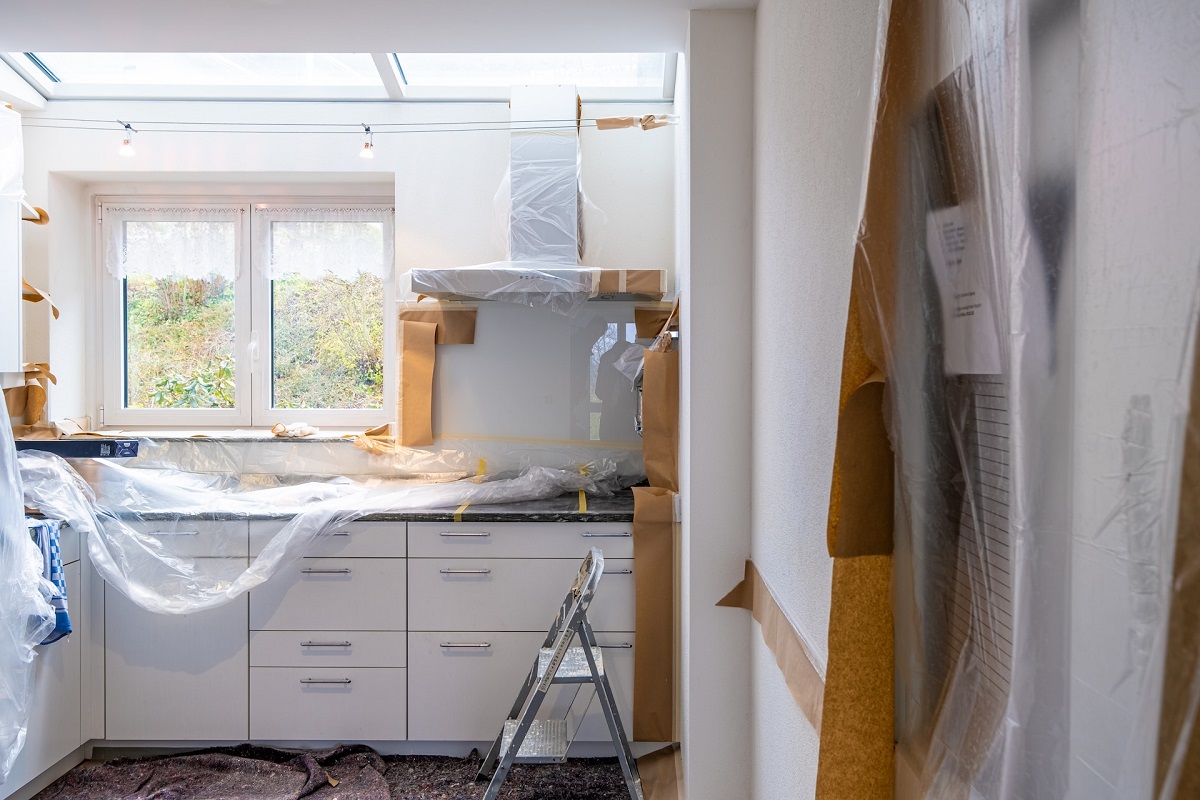
Lipstick on a pig? Some flips are a mess without their makeup
___
Published Date 4/19/2024
When Realtor.com’s Lauren Wellbank and her husband first walked through the door of their current home, they were worn down. They had spent six months looking at homes, their second child had recently been born, and they were desperate to find a place to settle down with their growing family of four.
The house they bought for $175k in Allentown, PA, looked move-in ready after having undergone a recent renovation that included a remodeled kitchen, updated appliances, new exterior siding, and a refinished roof. Cosmetically all the hard work had already been done for them. What they didn’t know was that the house had been flipped—and it didn’t take long to discover that many corners had been cut.
“We had barely moved in, with cardboard boxes everywhere, when we started noticing small things,” says Wellbank. “A light in the living room didn’t work. Dead electrical outlets didn’t connect to any of the switches. Then, more annoying issues started to crop up.”
She speaks of bathroom lights that began flickering whenever the hall light was turned on, a drain pipe in the laundry room overflowed, and the basement experienced flooding. But those were nothing compared to the big problems.
“We settled on our house in the fall, so we didn’t use the air conditioner until the following summer,” says Wellbank. “On the first hot day of the year, we learned that our HVAC system did nothing to cool the second floor of our house.” According to an HVAC tech, the person who installed the system had used a too-small unit for the home and had installed attic ductwork in the basement. This combination of errors meant that the unit was unable to push cold air up to the second floor.
Those flickering lights? An electrician said they were a byproduct of incorrectly installed fuses. Then a plumber said the reason their washer kept backing up was because it had been added to the same line as the kitchen, which was enough to cause frequent clogs.
The couple is nearly seven years into owning their home, and not a year goes by where they don’t have to address something that was mismanaged during the flip. They are now more than $10,000 into these fixes with another $10,000 ahead of them.
Wellbank admits that there were some obvious signs that things weren’t exactly done the right way — like a “new Bilco door” to the basement which was no more than a sheet of unsealed plywood with a handle. She says they should have been wary the moment they looked at the listing.
While homes might not advertise that they are a flip, a red flag is when the purchase history shows the home was put back on the market a few months to a year of the last purchase. Of course, not all flipped properties are poor quality, but a bad flip often stays on the market longer than what seems normal for the area.
Wellbank quotes Whittier-based developer Jameson Tyler Drew: “The first red flag of a bad flip, before I even see the house in person, is the ‘days on market’ part of the MLS listing. If the house doesn’t look like a total wreck, is decently priced, but has been on the market for 90-plus days, that’s a red flag that something in or around the house is wrong.”
Another dead giveaway? While the house may look pristine—with new flooring, a fresh coat of paint, and a recently renovated kitchen—other areas that often go ignored by buyers can have a more patched-up appearance.
“Interior cracks can be hidden with some clever use of drywall and paint,” Drew says. “Exterior cracks not so much. Foundation issues are sometimes extremely apparent from the outside, like disintegrating concrete, sagging and peeling stucco, or diagonal cracks in the exterior walls.” These issues are both costly and time-consuming to fix, which is why many flippers leave them unaddressed.
Take a close look at the bathroom, he adds. “When visiting the inside of a flipped home, I usually go straight to the bathroom and look at the floor. If the tile work is starting to crack or there are gaps between the floor and walls, I usually prepare my clients for the worst.”
What one needs for a flip inspection is an expert who is adept at spotting construction defects — a much more in-depth inspection, which costs two to three times that of a typical inspection, but is well worth the money. This dig-deep scrutiny will address the “nuts and bolts” of the construction, offering insight into whether you should hire another specialized professional like an engineer, plumber, or electrician. This type of inspection would have been hugely helpful in Wellbank’s situation, since the inspector would have referred them to an HVAC pro.
She now says that if you can’t afford to hire another pro to give your prospective home a once-over before you sign on the dotted line, you can always do some of the legwork yourself, or ask your real estate agent for help.
“If you have the name of any of the companies that worked on the house you’re looking at, whether it be the construction company or the corporation that purchased the property, you can look them up online and check their reviews on the Better Business Bureau website,” says Wellbank. Then get thee to your local municipality to ask for the building permits for the property address.
“If the square footage or property description for the city doesn’t match what’s in the MLS listing, you might want to move on,” Drew says.
In the end, Wellbank says, “Sure, brand-new cherry cabinets and granite countertops are nice, but for all the money we’ve spent taking care of the mistakes we’ve found along the way, we could have installed these items ourselves. It’s a good lesson to always look beyond a home’s appearance to what might be hiding underneath.”
Realtor, TBWS
All information furnished has been forwarded to you and is provided by thetbwsgroup only for informational purposes. Forecasting shall be considered as events which may be expected but not guaranteed. Neither the forwarding party and/or company nor thetbwsgroup assume any responsibility to any person who relies on information or forecasting contained in this report and disclaims all liability in respect to decisions or actions, or lack thereof based on any or all of the contents of this report.
First
Priority Home Loans is a DBA of Anchor Funding, Inc. NMLS #236419 &
1626581. California
Bureau of Real Estate,
Real
Estate Broker Number 01276087. Loans made or arranged pursuant
to the
California Department of Business Oversight. California Finance Lenders Law
license number 603 L293.


Andre Enriques
Branch Manager/Mortgage Lender
NMLS: 220937
First Priority Home Loans
891 Kuhn Drive #204, Chula Vista CA
Company NMLS: 236419
Office: 619-323-2066
Cell: 619-208-6499
Email: andrefunds4u@sbcglobal.net

Andre Enriques
___
Branch Manager/Mortgage Lender
NMLS: 220937
Cell: 619-208-6499
Last articles
___

From empty rooms to extra income
10/31/2024
“FOR RENT”... reads a sign in the window of a house. But there is much more...... view more

Market’s puzzled by low Initial Weekly Jobless Claims
10/31/2024
The October Challenger Job Cuts fell from 73K down to 56K. Initial Weekly Jobles... view more

The first look at third quarter GDP was weaker than expected
10/30/2024
Yesterday September JOLTS job openings fell 400K from August, the lowest opening... view more

Kitchen remodels: What your money really buys
10/29/2024
Want to renovate your kitchen? Be prepared for some eye-popping numbers. Accordi... view more

Someone’s here: Homeowners who live with poltergeists
10/28/2024
When northern California homeowner...... view more

Three things that could impact rates this week
10/28/2024
These are the three areas that have the greatest ability to impact rates this we... view more

Kissing your mortgage goodbye: The truth about early payoff
10/25/2024
Did you know that in Scotland, a house with a red door signifies the owner has p... view more

Has your roof reached its expiration date?
10/24/2024
When we speak of home, we speak of shelter. And there is no single element that ... view more
Load more
 First Priority Home Loans
First Priority Home Loans








































